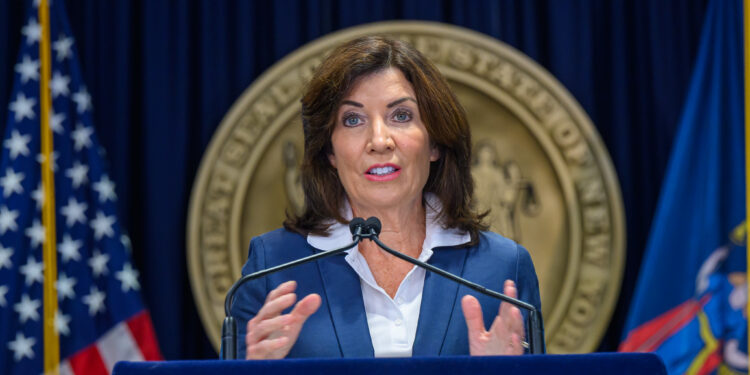On Wednesday, August 21st, New York Governor Kathy Hochul announced that a replacement plan for the controversial congestion pricing program, which had been paused in June, is expected to be unveiled by the end of the year. The proposed program, initially intended to charge drivers $15 to enter Manhattan below 60th Street, was paused due to concerns about its financial impact on New Yorkers and the backlash from both lawmakers and the public.
Hochul’s decision to delay the plan sparked criticism, with some accusing her of using the pause as a political maneuver ahead of the upcoming elections. Hochul, however, denied these claims, stating that the decision was made to reassess the financial burden the tolls would impose on working New Yorkers. The new plan is likely to be introduced after Election Day, aiming to secure the support of state lawmakers for implementation.
On Long Island, lawmakers expressed strong opposition to the plan, urging Hochul to abandon it entirely. Hempstead Town Supervisor Don Clavin and Representative Anthony D’Esposito both criticized” the plan as an “election gimmick” and argued that the Metropolitan Transportation Authority (MTA) should address its budget issues without further burdening drivers. D’Esposi’o suggested that the MTA has been mismanaging funds, using New Yorkers as a “cash machine” for years.
The MTA, in response, defended its budget management, highlighting that its overall budget has decreased in real terms since before the COVID-19 pandemic. The agency also emphasized that the pause on congestion pricing has delayed essential infrastructure upgrades, including the purchase of new trains and buses. The MTA faces a significant financial shortfall due to the postponement of the $15 billion in revenue the original plan was expected to generate.
As the debate over congestion pricing continues, the program’s fate remains uncertain, with supporters and opponents closely watching how the situation unfolds in the coming months.









